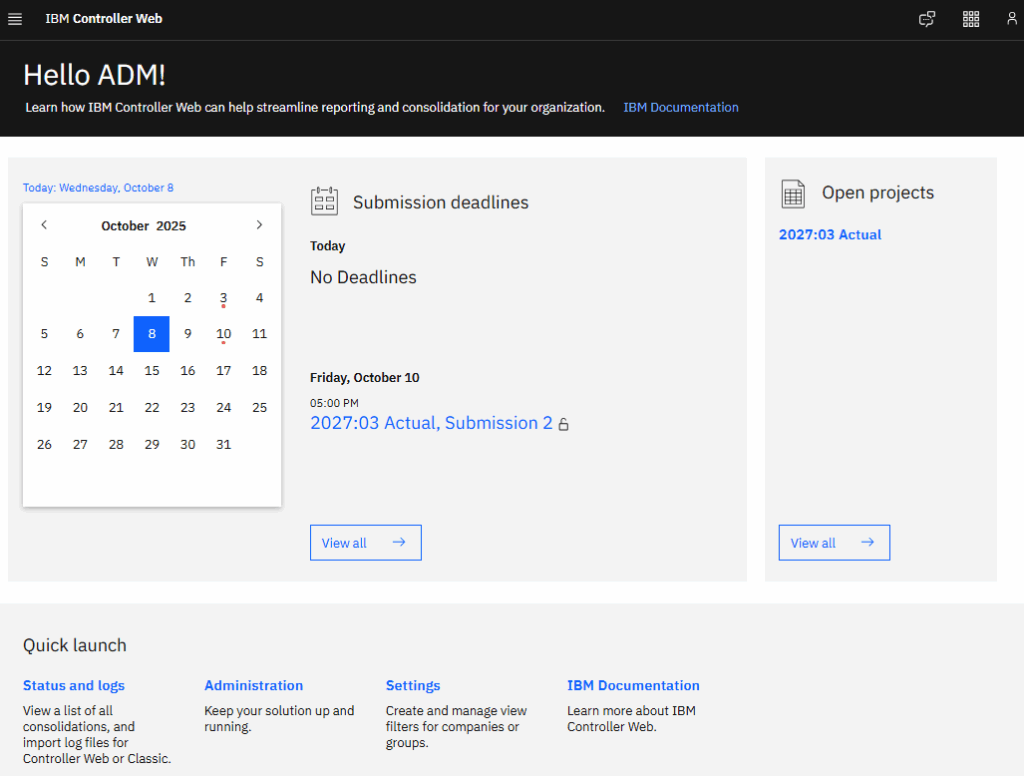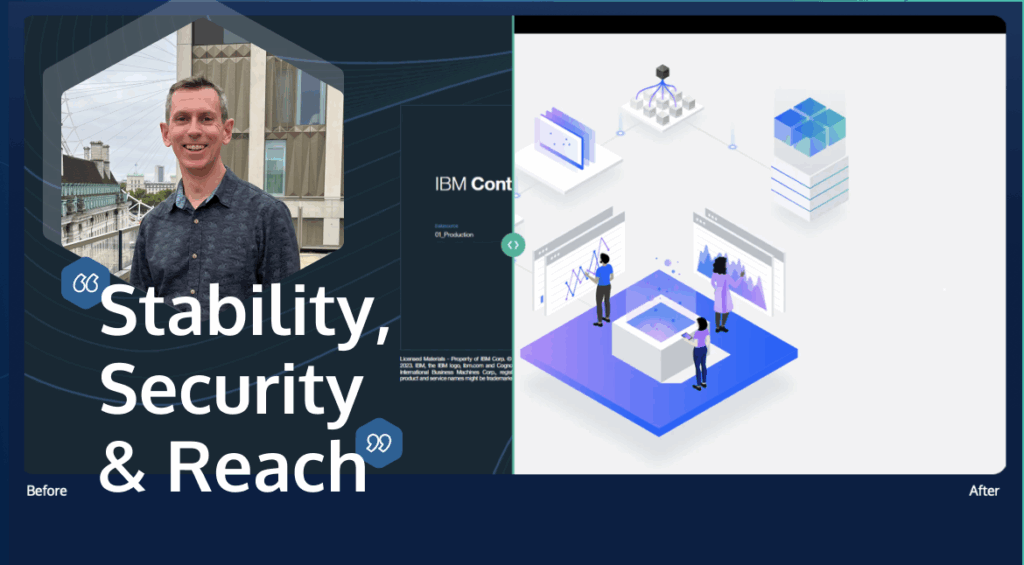IBM Controller Before and After: What’s New and How it Differs from Cognos Controller
By Mark Whitney
In this article, I want to share my thoughts on IBM Controller, specifically the updates released over the past year, say Nov 2024 to Oct 2025.
As ever, multiple iterations of update have been released in this time, part of IBM’s continued investment in this application. Release version 11.1 of IBM Controller came to market late 2024, followed by four fix packs. Modification 11.1.1 then arrived summer 2025.
Building Stability Beneath the Surface
New features are often the first thing people look for, but I want to start by acknowledging what is not seen.
Speaking with Paul Allen, recently, IBM Product Manager, brought home the effort being invested “below the surface” to use one of Paul’s analogies. This gives the stability, security, and reach towards other applications that underpin the foundation for enhancement. To achieve the ambitious goals in IBM’s roadmap, this foundational work is essential even if it goes largely unseen.
The Carbon Design Arrives in Controller Web
Among the visible improvements, the standout feature for me is the introduction of the new Carbon skin for Controller Web.

When accessed online, Controller Web now feels like part of the broader IBM product family, carrying the same branding and user experience seen across IBM’s digital systems. The familiar workflow remains intact, which is a win for continuity.
Users are now greeted by a new and improved homepage . This presents a layout for new menu options, and a structure for future enhancement. In my mind this will ease activities for future addition of Group and Administrator user roles that remain sparse. I would therefore presume, as and when new functionality is moved to Controller Web, it will now find a natural location for ease of navigation via this new homepage.
Easier Database Management on IBM SaaS
Another key addition, that I very much like, is access to basic database management within the IBM SaaS environment.
Tasks such as replicating CCR01_Production to CCR02_Test (to complete change control work ahead of promoting it back into production) can now be handled directly by the user in Controller Web, provided they have the necessary permissions.
Previously, these requests had to go through IBM Support as part of SQL management. Now, simple database backup and restore activities can be completed without the need for SQL Management Studio or SQL scripting knowledge. Users can simply follow the guided workflow in Controller Web. Creating a backup from one database and restoring it to another. It’s basically become a copy-and-paste style task, accessible to any trained user.
Simplifying SQL Maintenance
This simplification extends to SQL maintenance, particularly around the XACCLOCK table.
Users can now truncate this table directly within Controller Classic, removing what can often accumulate to be a large record of past data lock activity on an individual account level. This removes the need to involve SQL administrators, who may not be familiar with Controller’s application content, and puts more control in the hands of application users.
It’s so easy I show you how to do it in this short video.
Enhanced Import Specifications
There are also notable design improvements for import specifications in Controller Web, one of the most widely used functions by local finance teams.
New capabilities now support imports that include a “loop” requirement (e.g. twelve months of budget data spread across twelve columns). Additionally, conditional lookup and mapping have been introduced. For example, if a balance is in credit, it can now automatically map to creditors, whereas if in debit, it can map to assets.
These updates continue the theme of simplifying the data workflow process on Controller Web. Both these updates are relatively easy to learn and immediately apply, the equivalent tasks in Controller Classic are notably more complex.
Areas for Future Improvement
As ever, there are areas that remain in need of improvement and I understand to be in scope to product roadmap.
As mentioned above, Controller Web remains primarily designed for local finance users, rather than Group users or Administrators. However, much of the groundwork has now been laid for expansion in this direction.
Similarly, further development work is needed in the direction of Application Programme Interfacing (API). While API integration is now available via Controller Web, it currently requires data to be provided in CSV or XLSX formats. The fluidity of data exchange from source system to IBM Controller through API enablement feels to be in an early stage of development, so further improvements are anticipated here in the future.
Finally, while IBM Controller continues to excel in delivering consolidated results, including all adjustments and calculations in between, the final mile of generating complete management or statutory reporting packs (integrating results and commentary) remains an area of improvement that could significantly improve the product experience.
In Summary
2025 has been a year of steady, thoughtful progress for IBM Controller. Many of the improvements are invisible to the end user but critical to ensuring the application’s long-term stability and readiness for more advanced capabilities.
The updates we can see, particularly the Carbon design, SaaS database management, and simplified import processes, show a continued focus on usability and efficiency.
💬 Want to learn more about upgrading or getting the most out of IBM Controller 2025?
👉Get in touch with Aramar We look forward to talking to you.
